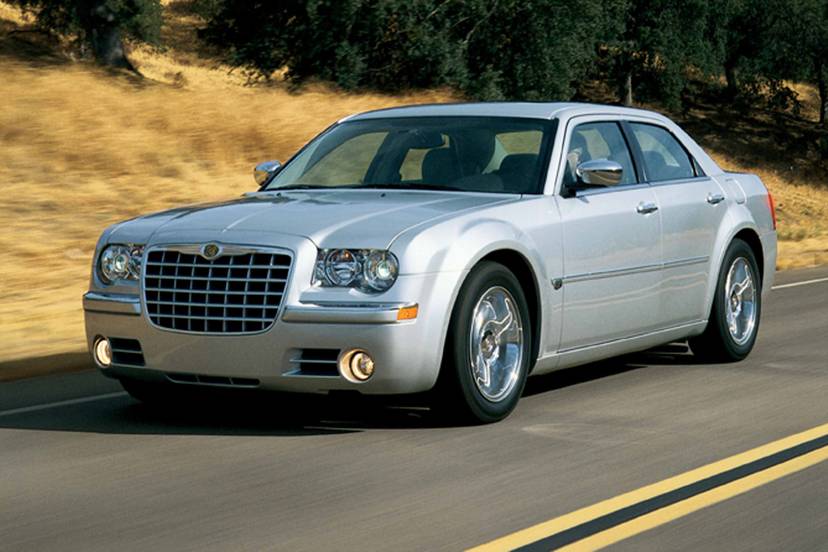
Say what you want about the Dodge Challenger SRT8.
Sure, it’s an anachronistic gas guzzler designed for Baby Boomers to travel back in time.
And against a backdrop of $4 gas and global-warming fears, the 425-horsepower Challenger seems like a challenge, indeed, against those who care about their paychecks or the environment.
But relax for a minute, forget all that noise and hear this: Challenger SRT8 is a superb road rocket, a gorgeous revival of pony-car magic and a car that performs with both awesome power and handling finesse.
Styled after the original Challenger that appeared in 1969 along with the muscle-car ‘Cudas, Camaros and Mustangs, the 2008 version takes the original styling cues – blacked-out grille, long hood, light-bar rear, tidy coupe roofline, racer-style fuel filler and haunchlike lift of the rear fenders – and successfully applies them to a more substantial car.
The look is instantly recognizable for its retro reference point, and other drivers practically rammed us trying to get a closer look. If ever a retro car has roused initial frenzy, and I’m thinking New Beetle, Mini Cooper, PT Cruiser and a couple others, Challenger has them all beat.
Most likely, the new wave of V-8-powered pony cars – Challenger, the latest Ford Mustang and Chevy Camaro, if they ever get around to building it – will be the last. Just as the gas crisis of the 1970s doomed the originals, the more-significant gas crisis of today could kill off the gas-guzzling verions of these, too.
Not that many Challengers are planned for production, just 6,800 for 2008, all high-performance SRT8s with automatic transmissions. Watch for regular-duty Challengers powered by 5.7-liter V-8s with cylinder deactivation for better highway mileage or V-6 engines, as well as six-speed stickshift.
Dodge Challenger SRT8 Limited Edition
Vehicle type: Five-passenger, two-door coupe, rear-wheel drive.
Engine: 6.1-liter V-8, 425 horsepower at 6,200 rpm, 420 pounds-feet of torque at 4,800 rpm.
Transmission: Five-speed automatic.
Wheelbase: 116 inches.
Overall length: 197.7 inches.
Curb weight: 4,140 pounds.
EPA rating: 13 city, 18 highway.
HIGHS: Stunning retro styling, engine power, overall drivability.
LOWS: $4 gas, tacky “carbon-fiber” appliqué, other drivers’ antics.
PERFORMANCE: The 6.1-liter V-8 is a torque monster that drags this 2-ton beast to 60 in just 5 seconds and up to 100 in just a couple ticks more. It’s also a benign cruising engine that burbles peacefully at highway speeds or quietly through traffic.
The five-speed automatic works well, enhanced with a responsive self-shifter. The six-speed manual should be nice.
Yes, gas mileage is abysmal, so bad that Challenger SRT8 gets slapped with a big, fat gas-guzzler tax of $2,100.
DRIVABILITY: Unlike Challengers of yore, the SRT8 handles nimbly despite its heft. Balanced, with nicely weighted steering and awesome Brembo brakes, SRT8 can be driven like a sports coupe.
The multilink independent rear suspension certainly helps, as do such electronic enhancements as electronic stability control and traction control.
STYLING: Right on the money and instantly recognizable. Some little touches are cool, such as the word “fuel” on the filler cap like the original. However, that fake carbon-fiber stuff glued onto the hood has got to go. Tacky.
INTERIOR: Not as evocative as the exterior, the cabin has a nice feel that still conveys the pony-car message. Sport seats in SRT8 are comfortable and supportive. The back seat is for little people only.
BOTTOM LINE: Unless on Ebay/eBay, where speculators have Challengers for sale north of $60,000, the price is modest for all this eyeball and drivability. Of course, that hefty gas-guzzler tax is only the beginning of the lofty fuel costs.
Base price: $37,320.
Price as tested: $41,310.
OPTIONS
Sunroof, $950.
Navigation, $850.
Gas-guzzler tax, $2,100.
Shipping, no charge.






























